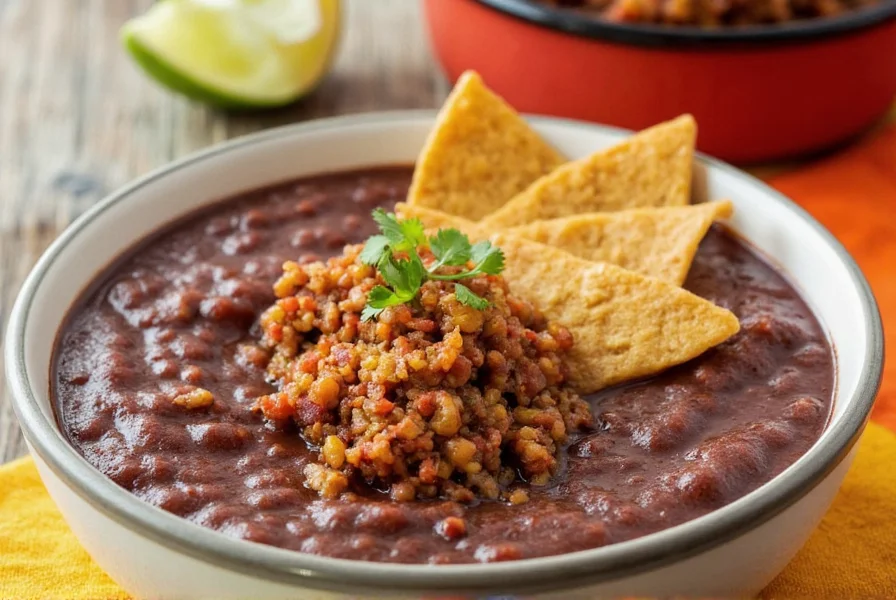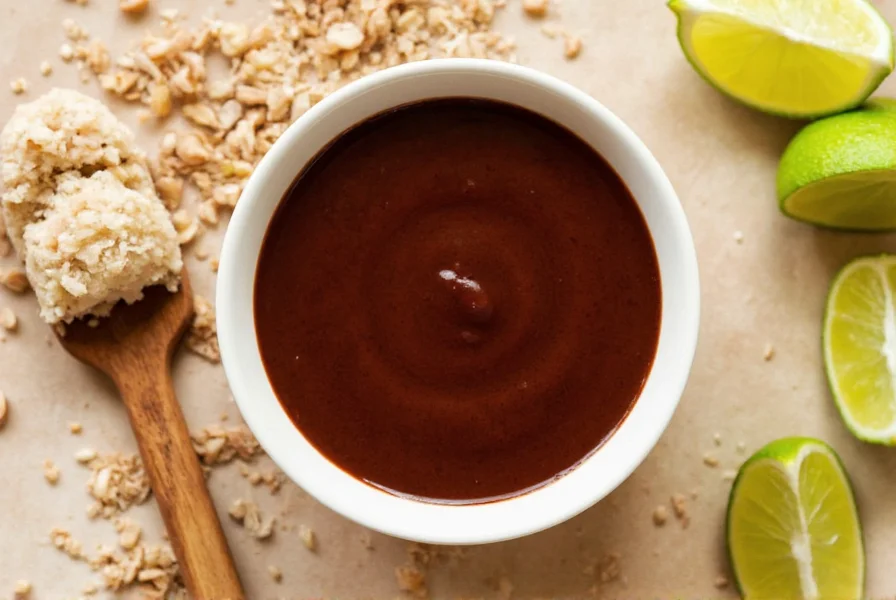Table of Contents
What is mole sauce Mexican? Mole sauce (pronounced "mo-lay") is a traditional Mexican sauce made from a complex blend of ingredients including chiles, spices, nuts, seeds, and often chocolate. Despite its name, it has no connection to the animal "mole"; the word comes from the Nahuatl "mōlli", meaning "sauce" or "concoction". This iconic sauce combines sweet, spicy, savory, and smoky notes into a single flavorful experience, forming a cornerstone of Mexican culinary heritage.

Types of Mole Sauces
There are over a dozen regional varieties of mole, each with distinct ingredients and flavor profiles:
| Type | Key Ingredients | Flavor Profile | Common Uses |
|---|---|---|---|
| Mole Poblano | Chiles, tomatoes, chocolate, spices | Rich, slightly sweet, complex | Enchiladas, turkey, special occasions |
| Mole Verde | Tomatillos, herbs, avocado, pumpkin seeds | Fresh, herbaceous, bright | Chicken, tacos, everyday meals |
| Mole Negro | Multiple chiles, nuts, chocolate, dried fruit | Deep, smoky, bittersweet | Weddings, celebrations, traditional dishes |
| Mole Amarillo | Pumpkin seeds, mild chiles, garlic | Earthy, nutty, mildly spicy | Beans, rice, grilled meats |
| Mole Rojo | Dried red chiles, sesame seeds, chocolate | Robust, smoky, balanced | Pork, stews, festive meals |
How to Cook Mole Sauce
Authentic mole requires careful preparation to balance its complex flavors. Follow these key steps:
- Roast chiles over medium heat until fragrant and blistered (avoid burning)
- Toast spices (cinnamon, cumin, cloves) in a dry pan to release oils
- Blend ingredients with broth until smooth (use a high-powered blender)
- Simmer for 1-2 hours while stirring constantly to develop depth
- Adjust seasoning with salt, sugar, or acid (vinegar/lime) to balance flavors
Pro Tip: Use Mexican chocolate (like Ibarra) for authentic flavor, and always remove chile seeds before blending to control heat levels. The sauce thickens as it cools, so adjust consistency with additional broth during simmering.

Buying Guide for Mole Sauce
For authentic results without homemade effort, choose store-bought options based on these criteria:
| Product Type | Best For | Key Considerations | Recommended Brands |
|---|---|---|---|
| Paste or concentrate | Traditional recipes | Check for minimal ingredients (no artificial additives) | Doña Maria, La Voz |
| Ready-to-use sauce | Quick meals | Verify it contains real chocolate (not substitutes) | Herdez, Maseca |
| Powdered mix | Beginners | Avoid mixes with excessive salt or preservatives | Old El Paso, Goya |
| Organic versions | Health-conscious cooks | Look for USDA Organic certification and non-GMO | Simply Organic, Eden Foods |
Frequently Asked Questions
What exactly is mole sauce in Mexican cuisine?
Mole sauce is a traditional Mexican sauce made from a complex blend of ingredients including chiles, spices, nuts, seeds, and often chocolate. Despite the name suggesting a connection to the animal "mole," it actually comes from the Nahuatl word "mulli," meaning "sauce" or "concoction." It's a fundamental element of Mexican culinary heritage with regional variations throughout the country.
Is all mole sauce made with chocolate?
No, not all mole sauces contain chocolate. While Mole Poblano and Mole Negro typically include chocolate, varieties like Mole Verde and Mole Amarillo are chocolate-free. The misconception stems from international popularity of chocolate-based moles, but authentic Mexican cuisine features many chocolate-free versions.
How do you pronounce "mole" correctly?
"Mole" is pronounced "mo-lay" (moh-lay), with the emphasis on the first syllable. The "e" at the end is silent. This is important because many English speakers mistakenly pronounce it as "mole" like the animal, which can cause confusion when discussing this traditional Mexican sauce.
What does authentic mole sauce taste like?
Authentic mole sauce has a complex flavor profile that balances multiple elements: spicy from chiles, earthy from spices and seeds, slightly sweet, and often with subtle bitter notes. Depending on the variety, you might taste hints of smoke, fruit, nuts, or chocolate. The best mole sauces achieve perfect harmony where no single flavor dominates but all elements work together in a sophisticated blend.
How long does homemade mole sauce last?
When properly stored in an airtight container, homemade mole sauce will last 4-5 days in the refrigerator. For longer storage, you can freeze mole sauce for up to 6 months. The flavors often deepen and improve after 1-2 days in the refrigerator. Store-bought versions typically have a longer shelf life—check the packaging for specific expiration dates.
What are the most common mistakes when making mole sauce?
The most common mistakes include: not properly toasting ingredients (which affects flavor depth), using low-quality chocolate (should be Mexican chocolate or high-cocoa content), improper chile preparation (not removing seeds properly), and insufficient simmering time. Authentic mole requires patience—rushing the process results in a sauce that lacks complexity. Another frequent error is adding too much chocolate, which can overwhelm the other delicate flavors.










 浙公网安备
33010002000092号
浙公网安备
33010002000092号 浙B2-20120091-4
浙B2-20120091-4